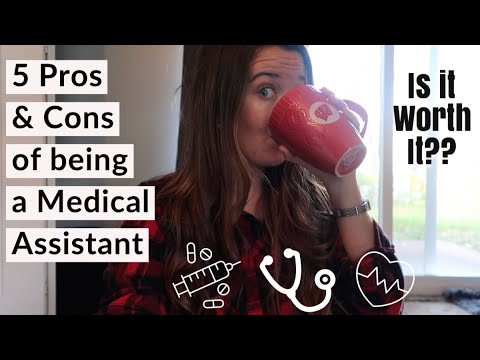Assisting with Medication Administration: What You Need to Know
Contents
- Introduction
- What is Medication Administration?
- Who Can Assist with Medication Administration?
- What are the Steps involved in Medication Administration?
- What are the Rights of the Medication Administration Assistant?
- What are the Responsibilities of the Medication Administration Assistant?
- What are the Risks Associated with Medication Administration?
- How Can Medication Administration be Improved?
- Conclusion
If you’re a caregiver, you may be called upon to assist with medication administration from time to time. Here’s what you need to know to do it safely and effectively.
Checkout this video:
Introduction
In the United States patients have the right to refuse medical treatment, even if that treatment could save their lives. However, this right is not absolute. There are circumstances under which a patient may be unable to refuse treatment, either because they lack the capacity to make decisions or because refusing treatment would put others at risk.
One situation in which a patient may be unable to refuse treatment is when they are not competent to make decisions about their care. Incompetence can be temporary, as in the case of someone who is unconscious or has suffered a stroke, or it can be permanent, as in the case of someone with dementia. In either case, if a doctor believes that a patient is not competent to make decisions about their care, they can override the patient’s wishes and administer treatment without the patient’s consent.
Another situation in which a patient may be unable to refuse treatment is when refusal would endanger public health. For example, if a patient has a highly contagious disease and refuses treatment that would prevent them from spreading the disease to others, public health officials may require them to undergo treatment against their will.
If you find yourself in a situation where you must administer medication to a patient who refuses it, there are some things you need to know. First and foremost, always follow your facility’s policies and procedures regarding medication administration. If you have any questions about how to proceed, ask your supervisor for guidance.
Second, make sure that you understand why the patient is refusing medication. Is it because they don’t understand what the medication is for? Are they afraid of side effects? Once you understand the reason for the refusal, you may be able to address it and convince the patient to accept the medication.
Third, always respect the patient’s wishes. If they remain adamant about refusing medication, do not force them to take it. If you do so against their will, you could be charged with assault or battery.
Fourth, document everything. Keep track of what happened during the encounter, including what was said by both parties and any actions taken. This will help protect you if there are any legal repercussions later on down the road
What is Medication Administration?
Medication administration is the process of giving a patient their prescribed medication. This can be done in a number of ways, including orally, topically, rectally, vaginally, and via injection. The nurse or other health care professional must ensure that the patient receives the correct medication in the correct dose at the correct time.
Who Can Assist with Medication Administration?
There are certain Health Care professionals who are allowed to assist with medication administration under specific circumstances. These include:
-Pharmacists
-Registered nurses
-Licensed practical nurses
-Certified nurse aides
In some states, unlicensed assistive personnel may also be allowed to administer medications if they have received the proper training. These individuals include:
–home health aides
-Personal care attendants
-Residential care workers
What are the Steps involved in Medication Administration?
There are many steps involved in medication administration, and it is important to be familiar with all of them. The first step is to obtain the medication from the pharmacy or other source. Next, the medication must be prepared for administration. This may involve crushing tablets, opening capsules, drawing up liquid into a syringe, or performing some other type of prep work. Once the medication is prepared, it is time to administer it. This may be done by mouth, by injection, or by some other route. Finally, it is important to document that the medication was given and to dispose of any leftover medications properly.
What are the Rights of the Medication Administration Assistant?
The medication administration assistant has the right to:
-Receive adequate orientation and training
-Be informed of the policies and procedures related to their job
-Work in a safe environment
-Be treated with respect by co-workers and supervisors
-Have access to resources needed to perform their job
-Be compensated for their work
What are the Responsibilities of the Medication Administration Assistant?
The Medication Administration Assistant (MAA) is a support role in many facilities that helps to ensure the safe and accurate administration of medication. The MAA may be responsible for tasks such as ordering and stocking medication, preparing doses, and entering data into the electronic health record. The MAA does not administer medication, but they play an important role in supporting the licensed staff who do.
In order to become an MAA, you must complete a formal education program and pass a state-level examination. Once you are certified, you will need to renew your certification every two years by completing continuing education credits. If you are interested in pursuing a career as an MAA, contact your state’s Board of Nursing for more information.
What are the Risks Associated with Medication Administration?
There are several risks associated with medication administration, including errors in administration, incorrect doses, and dangerous drug interactions. medication errors can occur at any stage of the process, from prescribing to dispensing to taking the medication.
The most common type of error is an incorrect dose, which can happen if the wrong amount of medication is prescribed, dispensed, or taken. Incorrect doses can be dangerous, and even life-threatening.
Another type of error that can occur is a dangerous drug interaction. This happens when two or more drugs interact in a way that increases the risk of side effects or other problems. Drug interactions can be dangerous because they can change the way a medication works.
Medication errors are one of the leading causes of preventable harm in healthcare. They are also one of the most common reasons for hospitalizations and emergency department visits. Medication errors can happen to anyone, at any age, and at any stage in their healthcare journey.
How Can Medication Administration be Improved?
There are many ways in which medication administration can be improved. One way is to ensure that patients receive their medications in a timely manner. Another way is to improve the accuracy of medication administration. And yet another way is to reduce the risk of medication errors.
Medication administration can be improved by:
– ensuring that patients receive their medications in a timely manner;
– improving the accuracy of medication administration; and,
– reducing the risk of medication errors.
Conclusion
As a health care worker, you will occasionally be asked to help administer medication. It is important to know how to do this correctly, in order to avoid any errors.
There are three main ways that medication can be administered: orally, through the skin, and by injection. Each of these methods has its own set of rules that must be followed.
Oral administration is the most common method of taking medication. pills, tablets, and capsules must be taken as directed by the manufacturer’s instructions. If a patient is unable to take their medication orally, it can be crushed and mixed with a small amount of water or another liquid. Medication should never be chewed or taken with food unless specifically directed by the manufacturer.
Administration through the skin can be done in two ways: transdermal (through the skin) or topical (applied to the surface of the skin). Transdermal administration is usually done with patches, while topical administration can be done with ointments, creams, or gels. Medication should always be applied as directed by the manufacturer’s instructions.
Injection is the most invasive form of medication administration, and should only be done by a trained professional. There are several different types of injections, including intramuscular (IM), subcutaneous (SC), and intravenous (IV). Each type of injection has its own set of risks and benefits that must be considered before administration.
When administering any type of medication, it is important to follow all manufacturer’s instructions. If you have any questions about how to administer medication correctly, always consult with a licensed health care professional.







